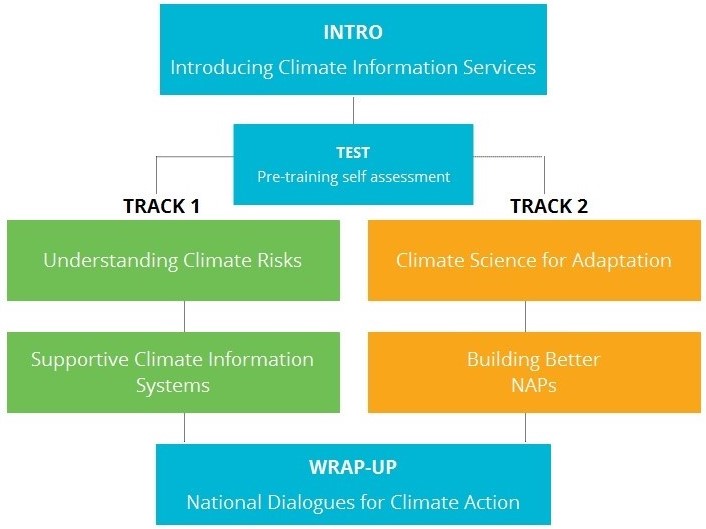Welcome!
In a world that is looking less likely to stay within 2°C of global warming compared to the pre-industrial levels, individuals need to make choices between a range of possible actions requiring information on past, present and potential future climate conditions. Adapting to climate change requires the development of the best available scientific information about climate trends and their societal impacts.
The course Integrating Climate Risk Information into NAPs shows how to strengthen National Adaptation Plans (NAPs) through appropriate climate information and coordinated policy action, enabling different types of institutions and actors to work together in a collaborative framework, drawing on the resources of the global hydro-meteorological community at large.
What you will learn
The course will enable you to:
- Describe the importance of climate information in adaptation planning and decision-making
- Identify technical resources for assessing climate risks
- Explore the role of National Hydro-meteorological Services in the NAP process
- Discuss how priority climate actions can be enhanced by climate scientific information
- Identify climate products and services that support NAPs
- Discuss how to promote effective partnerships between climate information producers and users
Course at a glance

The course is designed to respond the learning needs of both climate services providers (National Hydro-meteorological Services, research/academic and international organizations), and users (e.g. decision makers, private investors, non-governmental organizations, etc.), as well as of those working at the science-policy interface for outreach or communication purposes.
The training is modular and provides you with the liberty to choose and combine different thematic modules. There are two main themes or learning tracks available as illustrated in the figure below.
- Learning track 1 (green-colored): Producing climate information for NAPs
- Learning track 2 (yellow-colored): Using climate information for NAPs
Both learning tracks have in common the Intro and Wrap-up modules.
How to choose the learning track that best suits your profile and learning needs?
Once you complete the Intro module, you are recommended to undertake a test. Based on your answers to the five questions of the test you will be advised to follow either learning track 1 or 2, or both.
Completion requirements
Each learning track culminates with a quiz that will assess the knowledge you will acquire. If you pass the quiz with a minimum mark of 70%, a certificate of completion will be issued to you. If you choose to follow both learning tracks you can receive two certificates by passing both quizzes.
Support climate change literacy
We want to continue our crucial journey to equip people with the skills and knowledge needed to make informed decisions, to act and to fight climate crisis.
Donate

